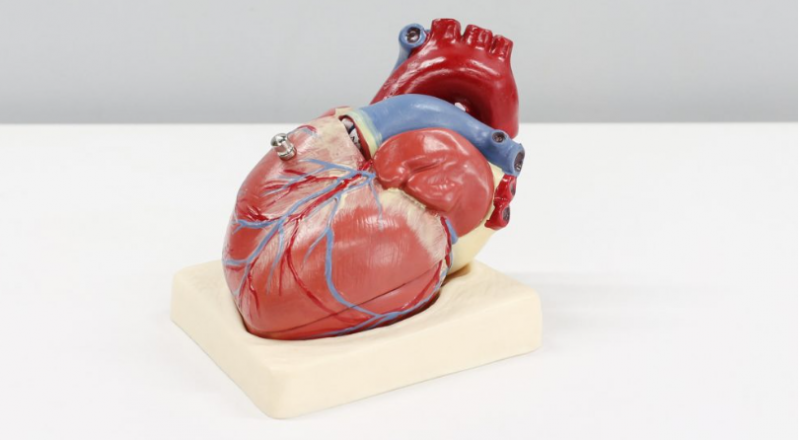
Death caused by Heart disease is a leading cause of death in many countries including India and the US, it is also a very deadly disease considering how, unlike other organs, the heart cannot repair itself after an injury, which is why tissue engineering, ultimately including the wholesale fabrication of an entire human heart for transplant, is important for the future cardiac medicine.
In order to build a heart, researchers need to replicate the unique structures that play a role in making up the heart, including, helical geometries, which create a twisting motion as the heart beats. Now, bioengineers from the Harvard John A. Paulson School of Engineering and Applied Sciences (SEAS) have developed the first biohybrid model of human ventricles with helically aligned beating cardiac cells, and have shown that muscle alignment does, in fact, dramatically increase how much blood the ventricle can pump with each contraction.
This advancement was made possible using a new method of additive textile manufacturing, Focused Rotary Jet Spinning (FRJS), which enabled the high-throughput fabrication of helically aligned fibres with diameters ranging from several micrometres to hundreds of nanometers. Developed at SEAS by Kit Parker's Disease Biophysics Group, FRJS fibres direct cell alignment, allowing for the formation of controlled tissue-engineered structures.
The research is published in Science. Tarr Family Professor of Bioengineering and Applied Physics at SEAS and senior author of the paper Parker said, "This work is a major step forward for organ bio fabrication and brings us closer to our ultimate goal of building a human heart for transplant,"
The team also demonstrated that the process can be scaled up to the size of an actual human heart and even larger, to the size of a Minke whale heart (they didn't seed the larger models with cells as it would take billions of cardiomyocyte cells).
This work has its roots in a centuries-old mystery." Our goal was to build a model where we could test Sallin's hypothesis and study the relative importance of the heart's helical structure," said John Zimmerman, a postdoctoral fellow at SEAS and co-first author of the paper.
"The human heart actually has multiple layers of helically aligned muscles with different angles of alignment," said Huibin Chang, a postdoctoral fellow at SEAS and co-first author of the paper. "With FRJS, we can recreate those complex structures in a really precise way, forming single and even four-chambered ventricle structures."
"Since 2003, our group has worked to understand the structure-function relationships of the heart and how disease pathologically compromises these relationships," said Parker. "In this case, we went back to address a never tested observation about the helical structure of the laminar architecture of the heart. Fortunately, Professor Sallin published a theoretical prediction more than a half-century ago and we were able to build a new manufacturing platform that enabled us to test his hypothesis and address this centuries-old question."
Thyroid might be an Associated Cause of Dementia: Study